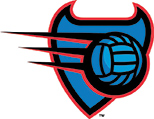|
By: Marie E. Zidek - DePaul University, Assistant Coaches Committee Originally Published in: Coaching Volleyball Magazine Provided By: AVCA
Creating scouting reports starts with remembering that the purpose is to provide a competitive edge over your opponent. This starts by playing competitively with the opponent. For instance, it does not matter what you want run offensively in your rotations if your passing efficiency is low. Reports can provide the opponent's attack percentage for outside sets off a two pass in rotation two when trailing by three points in the third game - but is that what your players will remember in crunch time? Scouting reports start with establishing key tendencies that your team can recognize and capitalize on in a match. For teams that have access to scout video, this may include video clips alongside handouts of top hitters and rotations (both in serve receive and point score phase) watched a couple days before the match. This may include how teams line up in each rotation, the likelihood of who gets set in each rotation, how often middles get set on an out-of-system pass and what shots hitters hit. Written sheets may include a personnel sheet with tendencies listed for each player, an overall sheet that lists the top three strengths of the opponent, as well as your top three strengths, and a rotational analysis of plays run in each rotation. After video, it is helpful to conduct a walk-through component, as your players probably learn through a mix of auditory, visual and written means. Some coaches take parts of practice to work on what is going to score points versus the opponent. You may practice running a slide behind the setter to expose a weak blocker. Maybe you want to practice blocking or defensive schemes versus each of the opponent's rotations and their attackers. These task-oriented drills hold players accountable to execute the report prior to game day.
During the day of the match, rotations are revisited. Plays run in each pattern are reviewed, as well as plays to attack your opponent with. This may take the form of control serving to your team while they execute three positive attack patterns versus the opponent's rotations. Verbal confirmation of the tendency data and key personnel can be reviewed just prior to match warm-up. For teams that do not have access to video prior to game day, most of your scouting may come within a match. You may choose to spend scout practice time working on improving strengths and shortening weaknesses. During matches, it is possible to give substitution players responsibilities to track shot charts for you and the opponent, passing efficiencies of your players and their opponents and end-of-rally stats. This can help you make offensive decisions, such as what is open for attackers to score on or whom to substitute. Defensive adjustments can be made according to where the charts show that the opponent is attacking most. Remember that the goal of scouting reports is to empower your players relative to how they can execute. The types and timing of delivery are used relative to your personnel, so as not to allow scouting the other side to paralyze them from playing their game. Building your scouting reports from general to specific and back to general again allows your players to remember the general tendencies of a team, while giving them an upper hand in specific situations (e.g., outside hitter swings line after passing in serve receive). The most perfect scouting report allows your current team to capitalize on their own strengths, use those strengths to expose the opponent's weaknesses and slow down the opponent's strengths.
|








